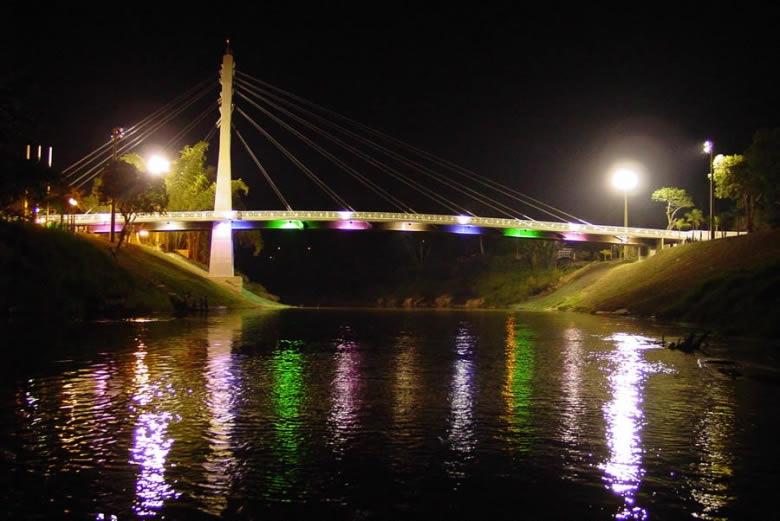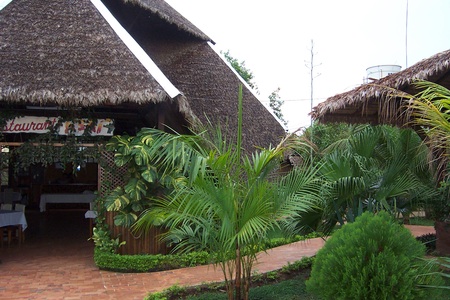Gas in Bolivia, Steaks in Brazil

From El Alto, Bolivia down to Cobija we drifted downward from the Altiplano like a butterfly, and landed in a new world. 100% humidity, 30 degree celsius temperature: it was like I was back in Nicaragua, but greener and wetter. The earth smelled of wet clay, of vegetation, of burning: the smell of the tropics.
“El Chaqueo” explains Rodrigo, who picks me up at the airport. I struggle to get my luggage, which is picked up and lifted into a heavy cargo truck, and then unloaded by hand into a cement corner of the airport, where the crowd jostles forward to see and identify their belongings. I’m there, too. More than half of them are Brazilian: the border is just minutes north of here. Looking around while I wait for my one small bag to appear, I notice the airport is a one room affair, cold concrete painted celeste azul (what is with tropical countries and that color?) and a series of round, thatched roofs that march upward in concentric circles, lashed with bamboo.

Rodrigo and I settle into the Hotel Asai - wood and concrete, with an electric water heater in the shower and modern shelving suspended from chains - and then head out for a tour. Cobija is Rodrigo’s home, and he is proud to show us around in a Fiat with no muffler. We go farting across town, gaining speed, until we get to a suspension bridge. It is clearly an international border - you can tell by the sudden appearance of folks in uniforms - and my passport (a dip passport to boot!) is back in the hotel.
“Wait!” I cry out, but Rodrigo has his foot on the gas and we’re launching ourselves over the rushing water of some serious river and heading to Brazil for steaks and beer.
Suddenly Rodrigo panics: “Get your seatbelt on!” he cries.
I scramble for the belt, pulling it across my chest as we whizz past the border police.
“And my passport?” I ask.
“Ahh, not necessary. This is the friendliest border in the Americas,” he explains. “But they’ll stop you if you don’t have your seatbelt on.”
As for the border, Rodrigo is right: people buy gas in Bolivia and groceries in Brazil; Brazilians come across to Bolivia to buy electrodomestic appliances. But enough of that, it was time to eat.
Dinner came in the form of lovely, Brazilian steak and sausage grilled over coals with sea salt, and served with arroz con queso and cold beer: $2.50 per person, including beer. Everyone is well dressed and well turned out; the women are wearing flowered dresses or short, jean skirts and tight tank tops. I could be in Nicaragua if I close my ears, but when I listen, it’s all lovely Portuguese around me. The women’s beauty seems natural, like the clothing was a casual afterthought that graces a beauty that is wholly their own.
Back to Cobija that night, seatbelt well-fastened, for more adventure in the north of Bolivia. But to this day I can still taste that steak.
Thanks to the News Agency of Acre for the picture of the bridge.
Trackbacks
The author does not allow comments to this entry

Comments
Display comments as Linear | Threaded